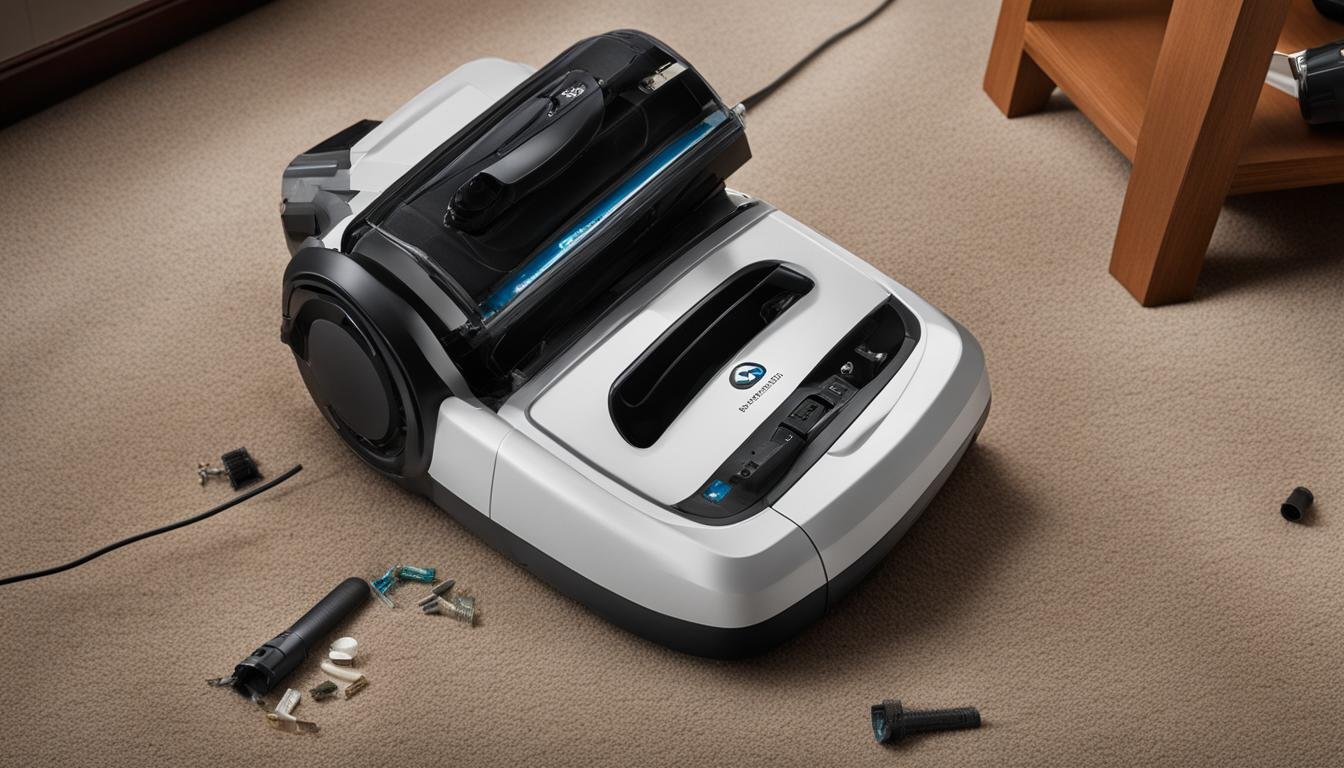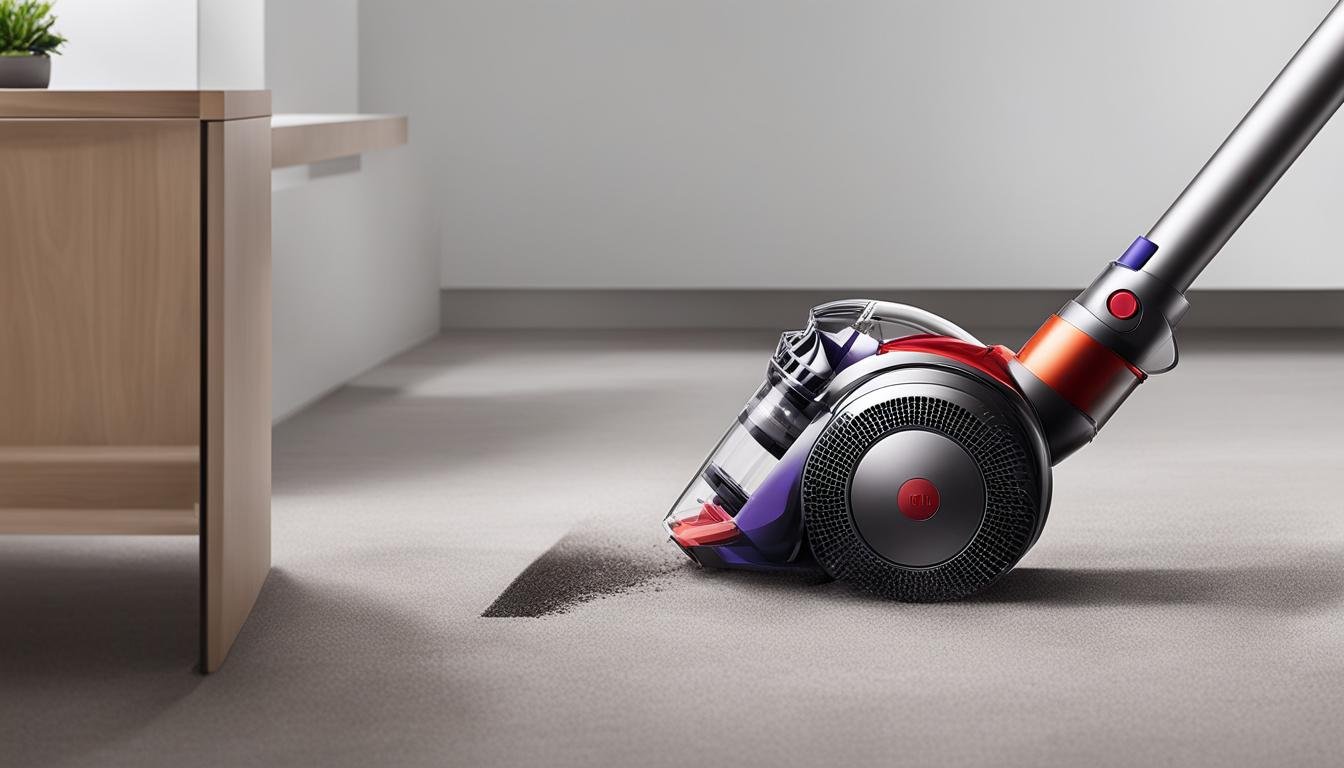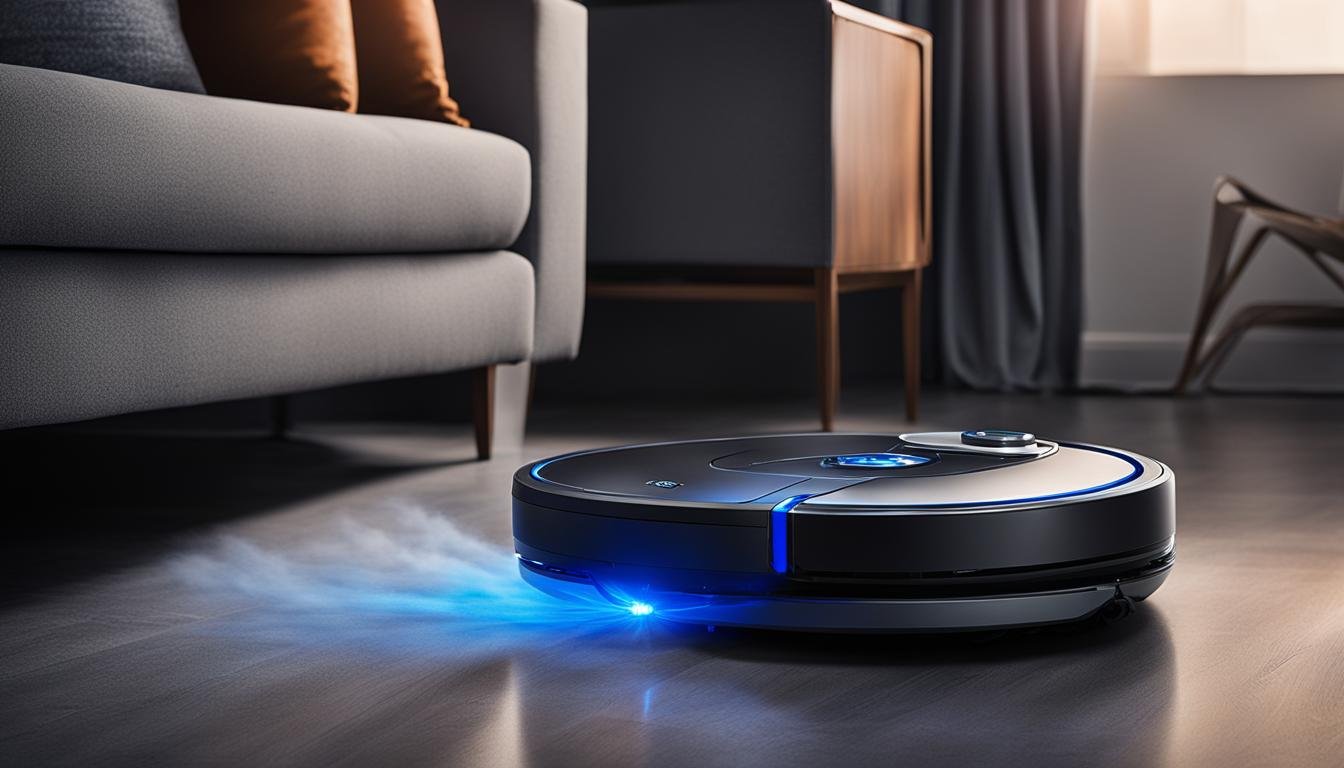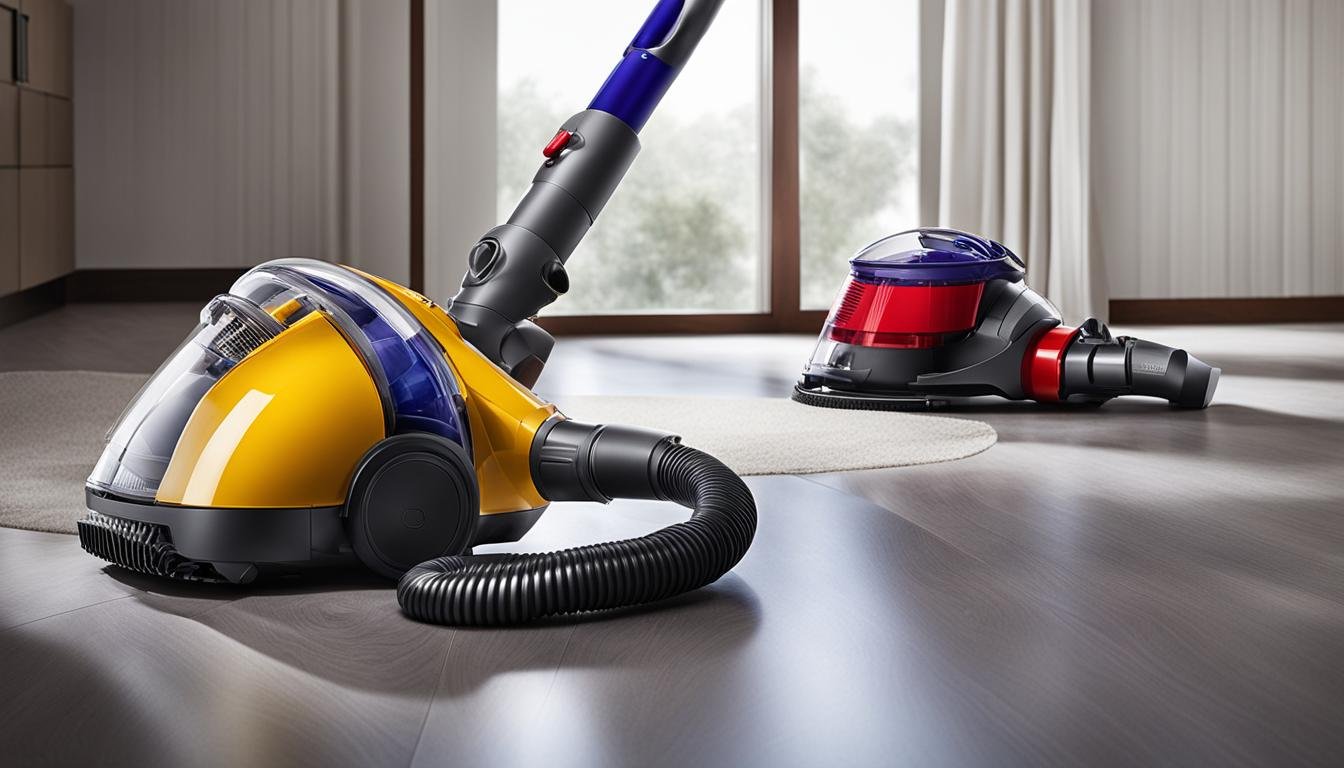If you are encountering issues with your Electrolux vacuum cleaner, it can be frustrating and inconvenient. However, there are several troubleshooting steps you can take to fix common problems and get your vacuum cleaner back in working order.
One of the first steps is to determine the location of any clogs in the vacuum system. To do this, you can run numbered paper towels or Styrofoam balls through each inlet. This will help you identify if there are any blockages causing the vacuum cleaner to not work properly.
If you find a clog, there are a few techniques you can use to remove it. One method is to create reverse suction by covering the nozzle with your hand and turning on the vacuum. This can sometimes dislodge the clog and allow the vacuum to resume normal function.
Another method is to run a maintenance sheet or paper towel through the clogged inlet to try and push the debris out. You can also use tools like electrician’s fish-tape or endoscopy cameras to locate and remove the clog if it is deeper in the system.
In addition to checking for clogs, it’s important to inspect the bags, filters, hoses, and motor of your Electrolux vacuum cleaner. A full or clogged bag can cause the vacuum cleaner to not pick up properly, while dirty filters can restrict airflow and affect suction power. It’s also essential to ensure that the hoses are not kinked or blocked, as this can impact performance.
Regular maintenance and proper installation of your Electrolux vacuum cleaner can help prevent clogs and ensure optimal performance. By following these troubleshooting steps and taking care of your vacuum cleaner, you can keep it working efficiently for years to come.
Key Takeaways:
- Identify clogs by running numbered paper towels or Styrofoam balls through each inlet.
- Try reverse suction or use maintenance sheets or paper towels to remove clogs. Use tools like electrician’s fish-tape or endoscopy cameras for deeper clogs.
- Inspect bags, filters, hoses, and motor for issues that could affect performance.
- Maintain and properly install your vacuum cleaner for optimal performance.
Electrolux Vacuum Cleaners: A Brief History and Models
Electrolux is a Swedish home appliance manufacturer that has been producing vacuum cleaners since 1910. They are consistently ranked as one of the top-selling appliance makers in the world.
Electrolux offers a range of vacuum cleaner models designed for consumer use, including both bagged and bagless options. These models cater to different preferences and cleaning needs, allowing users to choose the one that best suits them.
Over the years, Electrolux vacuums have undergone design changes to enhance performance and user experience. They have transitioned from torpedo-shaped canisters to more rounded and upright models, offering improved maneuverability and convenience.
In 2001, Electrolux ventured into the robotic vacuum cleaner market with their release of the Electrolux Trilobite. This robotic vacuum cleaner introduced advanced technology to automate the cleaning process and provide users with hands-free convenience.
In North America, Electrolux vacuums were sold under different brand names, including Aerus and Eureka, but the Electrolux name and branding has since returned, consolidating their presence and reputation.
Electrolux vacuum cleaners continue to be a popular choice among consumers worldwide, known for their durability, performance, and innovative features. Whether you prefer a traditional bagged model or the convenience of a bagless or robotic option, Electrolux offers a range of models that can meet your cleaning needs.
Common Causes of Loss of Suction in Electrolux Vacuum Cleaners
Loss of suction is a common issue faced by Electrolux vacuum cleaner users. There are five main reasons for this problem: bags, filters, blockages, gaps in the air flow, and the motor.
In bagged models, checking for a full bag or holes/rips in the bag is crucial. Regularly replacing the bags and ensuring they are properly installed will help maintain optimal suction power.
For bagless models, regular emptying of the dust container is necessary to prevent clogs and maintain suction. It is also important to clean the filters regularly, as they play a vital role in maintaining optimal suction power. Replacing filters that are damaged or worn out will also help improve the performance of the vacuum cleaner.
Blockages are another common cause of loss of suction. Users should check the hoses, ducting, and brush roll area for any obstructions and clear them if necessary. Removing any debris or tangled hair from the brush roll will also help improve suction performance.
Gaps in the air flow, such as holes or rips in the hose, can disrupt the suction power. It is important to check for any damage in the hose and ensure a secure connection between the hose and the base unit.
If all else fails, the motor may need to be replaced, including the carbon brushes within it. This should only be done by a professional technician.
Regular maintenance and checking for these common causes can help resolve loss of suction issues in Electrolux vacuum cleaners, ensuring optimal performance and longevity of the appliance.
FAQ
How can I fix my Electrolux vacuum cleaner if it’s not working?
If your Electrolux vacuum cleaner is not working, there are a few troubleshooting steps you can take. Start by checking for any clogs in the vacuum system and clear them if necessary. Make sure the bags, filters, hoses, and motor are in good condition. Regular maintenance and proper installation can help prevent issues.
Why won’t my Electrolux vacuum cleaner turn on?
If your Electrolux vacuum cleaner won’t turn on, check the power cord for any damage and ensure it’s properly connected to a working power outlet. You should also check the switch and make sure it’s in the “on” position. If the issue persists, it may require professional repair or replacement.
What should I do if my Electrolux vacuum cleaner is not picking up dirt?
If your Electrolux vacuum cleaner is not picking up dirt, first check for any clogs in the vacuum system and remove them if found. Make sure the brush roll is spinning freely and not clogged with hair or debris. Additionally, check if the suction power is set to the appropriate level and adjust if necessary. Cleaning or replacing the filters may also help improve suction.
How do I clean my Electrolux vacuum cleaner?
To clean your Electrolux vacuum cleaner, start by emptying the dust container or replacing the bag, depending on the model you have. Clean or replace the filters according to the manufacturer’s instructions. Use a soft cloth or brush to clean the exterior surfaces, and remove any hair or debris from the brush roll. Regular maintenance will help keep your vacuum cleaner working effectively.
What are some common causes of loss of suction in Electrolux vacuum cleaners?
There are several common causes of loss of suction in Electrolux vacuum cleaners. These include full or damaged bags, clogged filters, blockages in the hoses or brush roll area, gaps in the air flow such as holes or rips in the hose, and issues with the motor. Checking and addressing these potential problems can help restore suction power to your Electrolux vacuum cleaner.






Leave a Reply